Las Vegas Used 8% Less Colorado River Water in 2022, But Efforts Not Enough
Posted on: March 1, 2023, 04:13h.
Last updated on: March 3, 2023, 12:59h.
Nevada used significantly less Colorado River water in 2022 than the previous year. According to new data from the US Bureau of Reclamation, water use in the Silver State (mostly Las Vegas) dropped 8% from 242,168 acre-feet in 2021 to 222,797 acre-feet in 2022 for “water years” running from October 1 to September 30.

The Southern Nevada Water Authority (SNWA) attributes this achievement to several factors, including water conservation, more property owners following watering restrictions, the removal of nonfunctional grass turf that isn’t used for recreation, its Water Smart Landscape Rebate Program, and its Water Efficient Technologies Program.
We get to pat ourselves on the back for using 5.8 billion gallons less in 2022 than in 2021,” SNWA spokesperson Corey Enus told Casino.org. “Our community continues to lead in the area of water conservation.”
But, unfortunately, Nevada’s conservation isn’t enough. Nearly a month has passed since the federal government’s January 31 deadline for an agreement by all seven Colorado River Water Basin states. These include Colorado, New Mexico, Utah, Wyoming, Arizona, California, and Nevada.
Bad News Ahead
That agreement outlined how to conserve between 2 and 4 million acre-feet of water per year to save the system from collapsing. That’s a 30% reduction of the seven states’ current total water use.
Six states agreed to a plan they submitted to the US Bureau of Reclamation at the deadline, but only because they agreed that California should shoulder the brunt of the water cuts since it draws much more water (4.4 million acre-feet) than any other state.
The Golden State submitted its own plan, which cuts only 400K acre-feet, and the other states collectively shoulder more of the cuts, justifying that its key role in US agriculture makes it exceptional. California’s plan stands firm on California’s “senior rights” to water as specified in the Colorado River Compact, a century-old contract known as the “law of the river.”
“The seven states continue to talk and negotiate,” Enus stated.
Eyes (and Blame) on Calfornia Ag
But just how key California’s role is in US agriculture is part of that debate. The Colorado River Basin’s largest single water consumer is Southern California’s Imperial Valley, which draws 2.6 million acre-feet from the river annually. That valley devotes about a third of its acreage to alfalfa. This water-intensive crop annually consumes at least 400K acre-feet of Colorado River water — more than Nevada’s entire allotment.
Up to 40% of the entire Colorado River basin’s water is consumed by alfalfa, according to a 2020 study. And that alfalfa is grown not to feed local communities but to export to China, Japan, Saudi Arabia, and other foreign countries. They use it to feed cows raised to fulfill beef and dairy demand in areas where land grazing is either too expensive or too difficult.
“It seems counterintuitive to think that our water should be earmarked to fulfill the beef demand of other countries when we’ve got a crisis on our hands right here and now,” Enus said.
What’s Next?
If the seven states can’t agree upon a plan, the federal government may follow through on threats to act unilaterally.
In that case, the Bureau of Reclamation will issue a draft Supplemental Environmental Impact Statement (SEIS) on its action plan for review and public comments either this month or in April.
That will be followed in May or June by a final SEIS and a final decision on what cuts to forcibly impose upon the seven states in July.
Related News Articles
Colorado River Snowpack Reaches 158%, Easing Las Vegas Drought
Filling Lake Mead with Mississippi River Water No Longer a Pipe Dream
Most Popular
LOST VEGAS: ‘Tony The Ant’ Spilotro’s Circus Circus Gift Shop
Las Vegas Overstated F1 Race’s Vegas Impact — Report
Mega Millions Reportedly Mulling Substantial Ticket Price Increase
Las Vegas Strip Stabbing Near The Strat Leaves One Man Dead
Most Commented
-
End of the Line for Las Vegas Monorail
— April 5, 2024 — 90 Comments -
Mega Millions Reportedly Mulling Substantial Ticket Price Increase
— April 16, 2024 — 6 Comments -
Long Island Casino Opponents Love New York Licensing Delays
— March 27, 2024 — 5 Comments
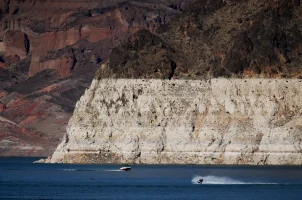
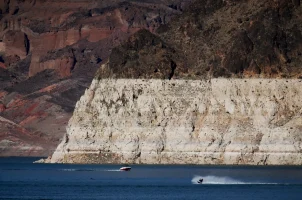
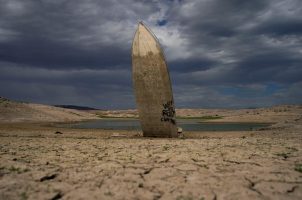
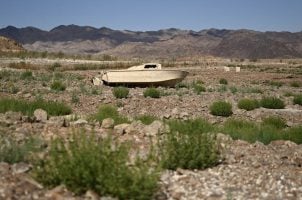










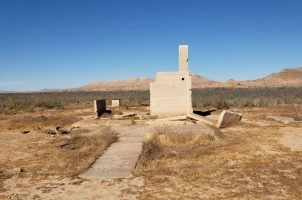

No comments yet